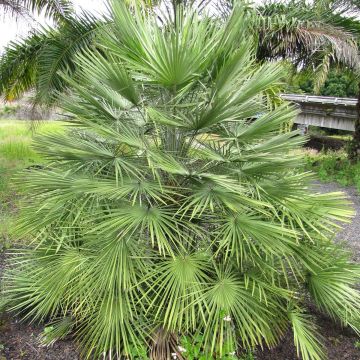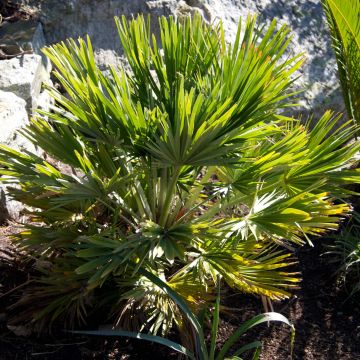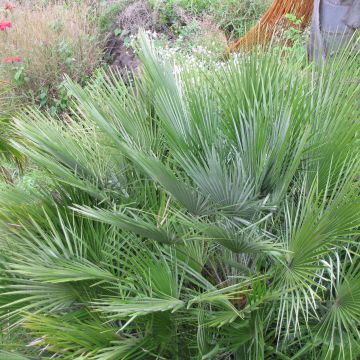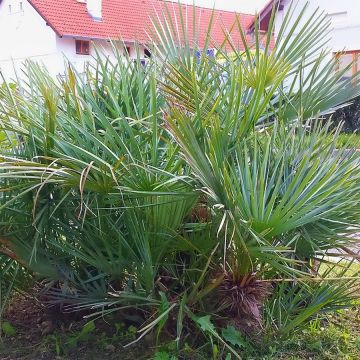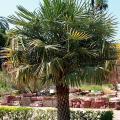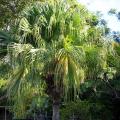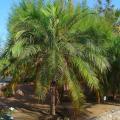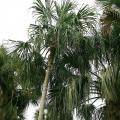Chamaerops
Does this plant fit my garden? Set up your Plantfit profile →
Available in 4 sizes
Available in 3 sizes
Available in 3 sizes
Available in 2 sizes
Chamaerops, especially the Chamaerops humilis, is better known as the Dwarf palm, fan palm or Mediterranean palm. This palm tree, endemic to the western Mediterranean, owes its success to its ornamental qualities but also to its hardiness, its resistance to drought and salt spray, and its moderate growth that allows it to be used in small gardens or cultivated in large containers for many years. Very accommodating, it bears beautiful fan-shaped leaves and often produces new shoots, giving it a bushy and dense habit that adds to its charm. In recent years, interesting forms have emerged with almost blue hues on Chamaerops humilis var. cerifera or, with a particularly compact habit and fewer stump shoots there is Chamaerops humilis 'Vulcano'. In nature, Chamaerops spontaneously grows on rocky slopes, up to 1,200m (4ft) altitude in Morocco, usually on limestone soil. Its presence in the Mediterranean basin testifies to a past where a more tropical climate prevailed, but it has since adapted to arid conditions and snowy winters. In the garden, it prefers a very sunny and sheltered exposure, and well-drained soils that will allow it to withstand short freezes of about -10/-12°C (14/10.4°F), or even -15°C (5°F) for the hardiest varieties.
Haven't found what you were looking for?







































